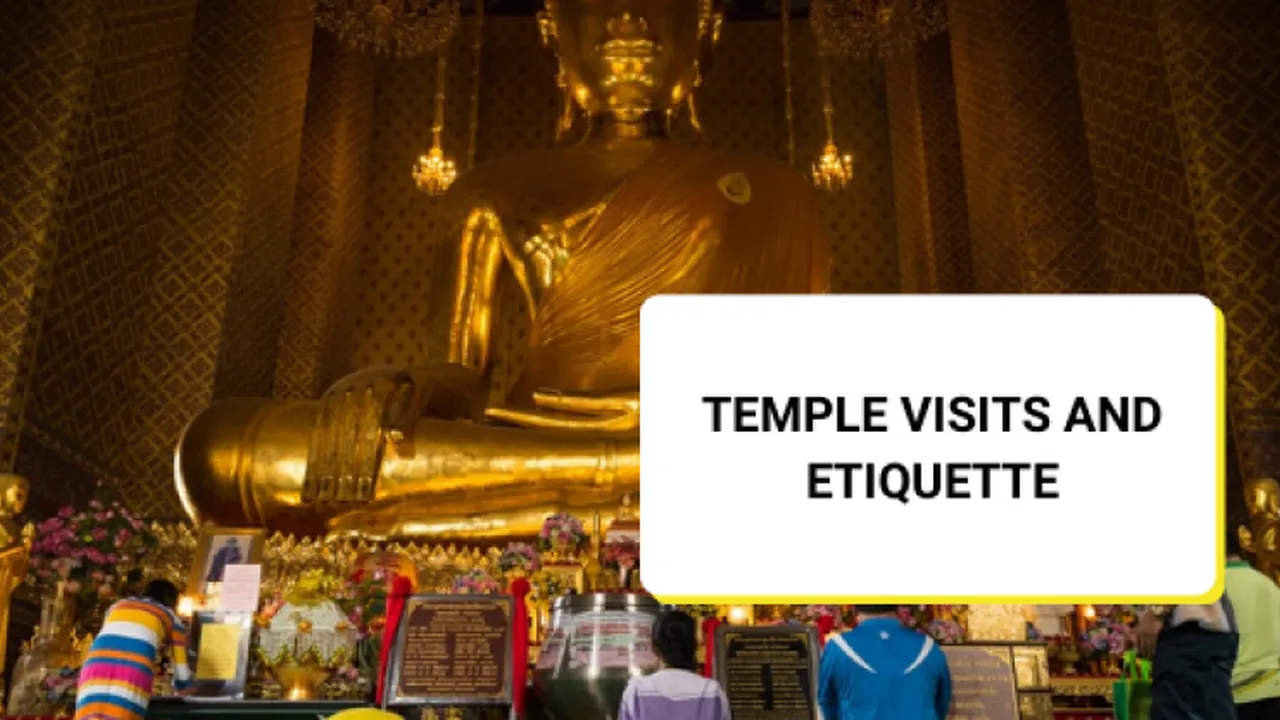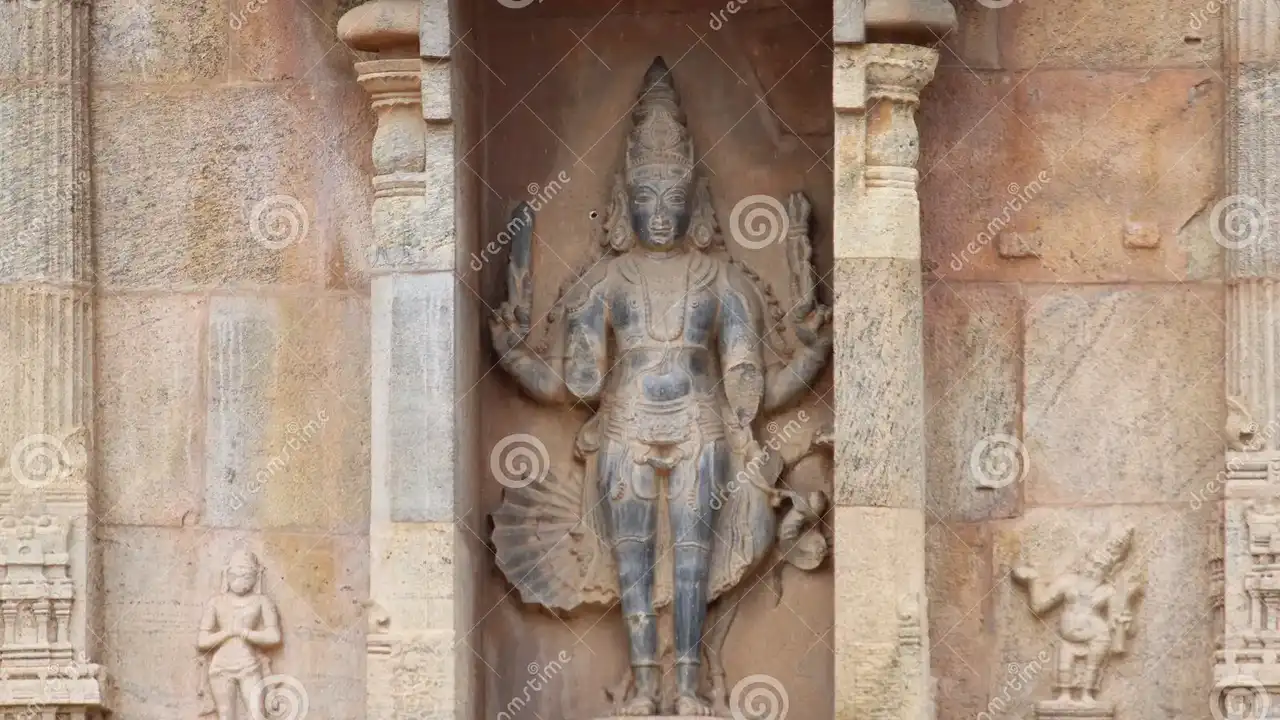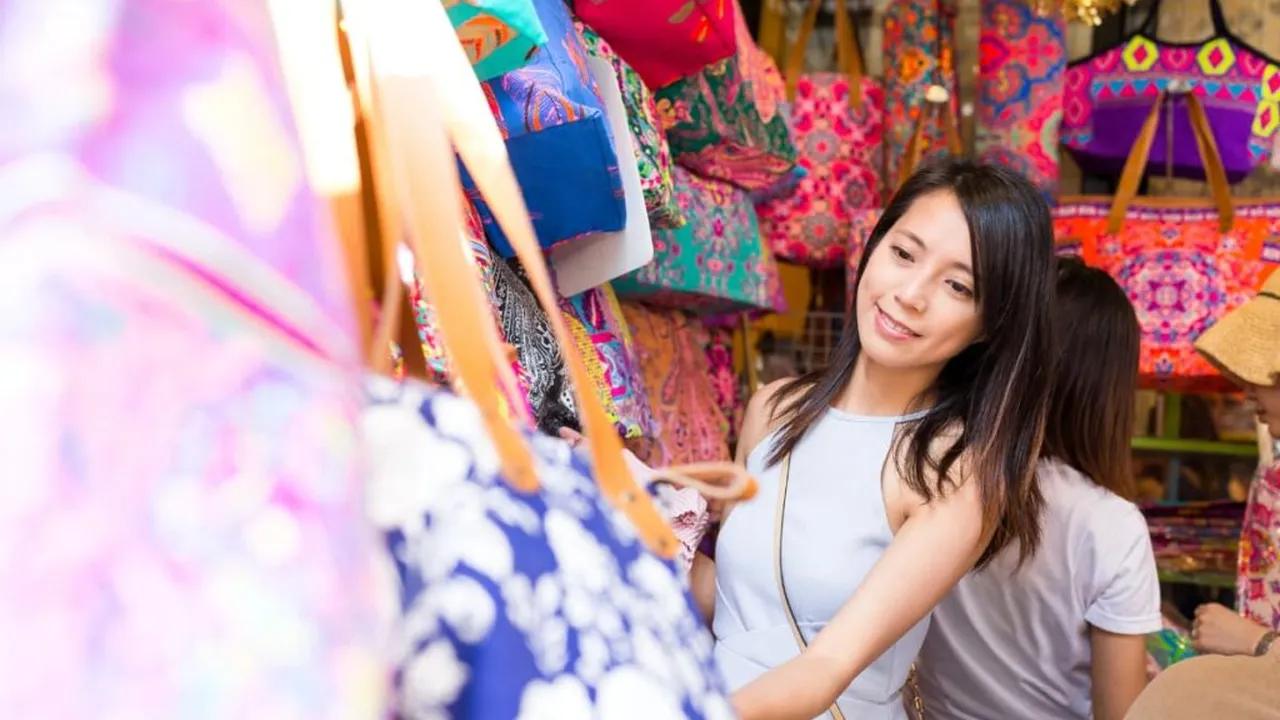Temple Etiquette: What to Wear and How to Behave

Understanding the Basics of Temple Visits Key Cultural Considerations
So, you're planning a visit to a temple? Awesome! Temples are often beautiful, peaceful places, steeped in history and tradition. But before you go wandering in, it's essential to understand the basic etiquette. Think of it like visiting someone's home – you want to be respectful, right? Well, temples are often considered sacred spaces, so a little preparation goes a long way. This guide will give you the lowdown on what to wear, how to behave, and even some product recommendations to make your visit smoother.
Dress Code Decoded What to Wear for a Respectful Temple Visit
Let's talk clothes. What you wear matters. Generally, modesty is key. Think covering up more skin rather than less. Here's a breakdown:
- Shoulders and Knees: These are the big ones. Make sure your shoulders and knees are covered. No tank tops, short shorts, or mini-skirts.
- Tops: Opt for loose-fitting t-shirts, blouses, or long-sleeved shirts. Avoid anything too tight or revealing.
- Bottoms: Long pants, skirts that fall below the knee, or modest dresses are all good choices.
- Shoes: You'll usually need to remove your shoes before entering the main temple area. Sandals, flip-flops, or slip-on shoes are convenient.
- Head Covering: In some temples, especially those with Islamic influences, women may be required to cover their heads. A scarf or shawl is a good idea to have on hand.
Product Recommendations Modest Clothing Choices for Temple Visits
Alright, let's get into some specific product recommendations to help you dress appropriately and comfortably for your temple visit. We'll cover everything from versatile scarves to comfortable pants and skirts.
Lightweight Scarves for Head and Shoulder Covering: Practical Style and Affordability
A lightweight scarf is a must-have. It can be used to cover your head, shoulders, or even your knees if you find yourself unexpectedly underdressed. Look for scarves made from breathable fabrics like cotton, linen, or rayon. These are comfortable in warm climates and easy to pack.
- Product Recommendation 1: "The Versatile Voyager Scarf" - A large, rectangular scarf made from 100% cotton. Comes in a variety of colors and patterns. Perfect for draping over your shoulders or wrapping around your head. Price: $15 - $25. Usage Scenario: Ideal for temples where head coverings are required or for adding a layer of modesty to your outfit. Comparison: Cheaper synthetic scarves may be less breathable and uncomfortable in hot weather. Silk scarves, while beautiful, may be too delicate for travel.
- Product Recommendation 2: "The Breezy Bamboo Shawl" - Made from a bamboo rayon blend, this shawl is incredibly soft and lightweight. It's also naturally antibacterial and moisture-wicking. Price: $20 - $35. Usage Scenario: Excellent for temples in humid climates. The moisture-wicking properties will keep you cool and comfortable. Comparison: Cotton scarves can sometimes feel heavy in humid conditions. Bamboo rayon is a great alternative.
Comfortable and Modest Pants and Skirts: Balancing Style and Respect
Finding comfortable and modest bottoms is crucial for a pleasant temple visit. Look for loose-fitting pants or skirts that fall below the knee. Avoid anything too tight or revealing.
- Product Recommendation 1: "The Travel-Friendly Palazzo Pants" - Wide-leg palazzo pants made from a lightweight, wrinkle-resistant fabric. Available in various colors and patterns. Price: $30 - $50. Usage Scenario: Perfect for hot climates. The wide-leg design allows for airflow, keeping you cool and comfortable. Comparison: Jeans can be too hot and restrictive for temple visits. Palazzo pants offer a more comfortable and stylish alternative.
- Product Recommendation 2: "The Flowy Maxi Skirt" - A long, flowing maxi skirt made from a soft, breathable fabric. Look for skirts with a comfortable elastic waistband. Price: $25 - $40. Usage Scenario: A classic and elegant choice for temple visits. The maxi length ensures modesty, while the flowy fabric keeps you comfortable. Comparison: Shorter skirts are generally not appropriate for temples. A maxi skirt provides the necessary coverage while remaining stylish.
- Product Recommendation 3: "The Linen Blend Cropped Pants" - Cropped pants made from a linen and cotton blend. Breathable and stylish, these are a great alternative to full length trousers. Price: $35 - $55. Usage Scenario: Allows your legs to breath more than full length pants while still being suitable for a temple visit. The linen blend is easy to wash and care for. Comparison: Can be more expensive than synthetic materials, but the breathability is worth it.
Comfortable and Practical Footwear: Easy to Remove and Wear
Since you'll likely be removing your shoes before entering the temple, comfortable and easy-to-remove footwear is essential. Sandals, flip-flops, or slip-on shoes are all good choices.
- Product Recommendation 1: "The Comfortable Slip-On Sandals" - Simple and comfortable slip-on sandals with a cushioned footbed. Look for sandals with good arch support. Price: $15 - $30. Usage Scenario: Convenient for quickly slipping on and off when entering and exiting the temple. Comparison: Shoes with laces can be cumbersome to remove and put back on. Slip-on sandals are a much more practical choice.
- Product Recommendation 2: "The Travel-Friendly Flip-Flops" - Lightweight and packable flip-flops. Ideal for carrying in your bag in case you need to remove your shoes unexpectedly. Price: $5 - $15. Usage Scenario: A great backup option for temples where shoes are not allowed. Comparison: While convenient, flip-flops may not provide the best support for long walks.
- Product Recommendation 3: "Foldable Ballet Flats" - A great alternative to sandals, these foldable ballet flats offer more coverage and style. Price: $20 - $40. Usage Scenario: Perfect for travelers who want something more sophisticated than sandals but still easy to take off. The foldable design makes them easy to store. Comparison: More expensive than flip-flops, but offer better support and a more polished look.
Behavioral Guidelines Showing Respect and Mindfulness in Temples
Okay, you're dressed appropriately. Now, let's talk about how to behave. Temples are places of worship and reflection, so it's important to be mindful of your actions.
- Silence: Keep your voice down. Avoid loud conversations or boisterous laughter.
- Photography: Check if photography is allowed. Some temples prohibit it, especially inside the main prayer halls. If it is allowed, be respectful and avoid using flash.
- Pointing: Avoid pointing your feet at religious figures or objects. This is considered disrespectful in many cultures.
- Touching: Don't touch statues or religious artifacts unless specifically permitted.
- Food and Drink: Refrain from eating or drinking inside the temple grounds, unless there's a designated area for it.
- Offerings: If you wish to make an offering, follow the local customs. You can usually find guidance on what to offer and how to present it.
- Personal Space: Be mindful of personal space, especially when others are praying or meditating.
- Cleanliness: Help keep the temple clean by disposing of any trash properly.
Specific Cultural Considerations Researching Local Customs and Traditions
This is where your research skills come into play! Different cultures have different customs and traditions surrounding temple visits. Before you go, do a little digging to understand the specific etiquette of the temple you're visiting. Here are some things to look for:
- Local Customs: Are there any specific rituals or practices that you should be aware of?
- Religious Beliefs: Understanding the basic beliefs associated with the temple can help you appreciate its significance.
- Historical Context: Knowing the history of the temple can add depth to your visit.
- Dress Code Variations: Some temples may have stricter dress codes than others.
- Offerings: What types of offerings are typically given at the temple?
Communicating Respect Through Actions: Non-Verbal Cues and Gestures
Sometimes, it's not what you say, but how you say it. Non-verbal cues and gestures can go a long way in showing respect. Here are a few things to keep in mind:
- Bowing or Nodding: In many Asian cultures, bowing or nodding is a sign of respect. Observe how others greet monks or religious figures and follow suit.
- Eye Contact: Avoid prolonged or intense eye contact, especially with monks or religious figures. It can be interpreted as disrespectful.
- Hand Gestures: Be mindful of your hand gestures. Avoid pointing or making abrupt movements.
- Posture: Maintain good posture. Avoid slouching or leaning against walls or religious structures.
- Facial Expressions: Keep your facial expressions neutral and respectful. Avoid frowning or looking bored.
Dealing with Unexpected Situations: Graceful Navigation of Cultural Differences
Even with the best preparation, you might encounter unexpected situations. The key is to remain calm, respectful, and adaptable. Here are some tips for navigating cultural differences gracefully:
- Observe and Learn: Pay attention to how locals are behaving and follow their lead.
- Ask for Help: If you're unsure about something, don't hesitate to ask for help from a temple worker or a local.
- Apologize Sincerely: If you accidentally commit a faux pas, apologize sincerely. A simple "I'm sorry, I didn't know" can go a long way.
- Be Patient: Cultural differences can sometimes be confusing or frustrating. Be patient and remember that everyone is doing their best.
- Embrace the Experience: Embrace the opportunity to learn about a different culture. It's all part of the adventure!
Essential Items to Pack: Beyond Clothing Checklist for a Comfortable Temple Visit
Beyond the right clothing, there are a few other essential items you should pack for a comfortable temple visit:
- Hand Sanitizer: You'll be removing your shoes, so hand sanitizer is a good idea to keep your hands clean.
- Wet Wipes: Useful for cleaning your feet after removing your shoes.
- Small Bag: A small bag to carry your shoes while you're inside the temple.
- Water Bottle: Stay hydrated, especially in hot climates.
- Sunscreen: Protect your skin from the sun, especially if you'll be spending time outdoors.
- Insect Repellent: Mosquitoes can be a nuisance, especially in tropical areas.
- Small First-Aid Kit: Include essentials like bandages, antiseptic wipes, and pain relievers.
- Cash: Some temples may accept donations or sell souvenirs.
Respectful Photography Guidelines: Capturing Memories Without Offending
If photography is allowed, remember to be respectful. Here are some guidelines:
- Ask Permission: If you want to photograph people, always ask for their permission first.
- Avoid Flash: Flash can be disruptive and disrespectful, especially during prayers or ceremonies.
- Be Discreet: Avoid taking photos that are too intrusive or that might make people feel uncomfortable.
- Focus on the Architecture and Art: Instead of focusing on people, try capturing the beauty of the temple's architecture and art.
- Share Your Photos Responsibly: When sharing your photos online, be mindful of the context and avoid posting anything that could be considered disrespectful.
The Importance of Research: Preparing for a Meaningful and Respectful Visit
The more you research and prepare, the more meaningful and respectful your temple visit will be. Take the time to learn about the local customs, traditions, and beliefs. By doing so, you'll not only avoid unintentional faux pas, but you'll also gain a deeper appreciation for the culture and the sacred space you're visiting.
:max_bytes(150000):strip_icc()/277019-baked-pork-chops-with-cream-of-mushroom-soup-DDMFS-beauty-4x3-BG-7505-5762b731cf30447d9cbbbbbf387beafa.jpg)






